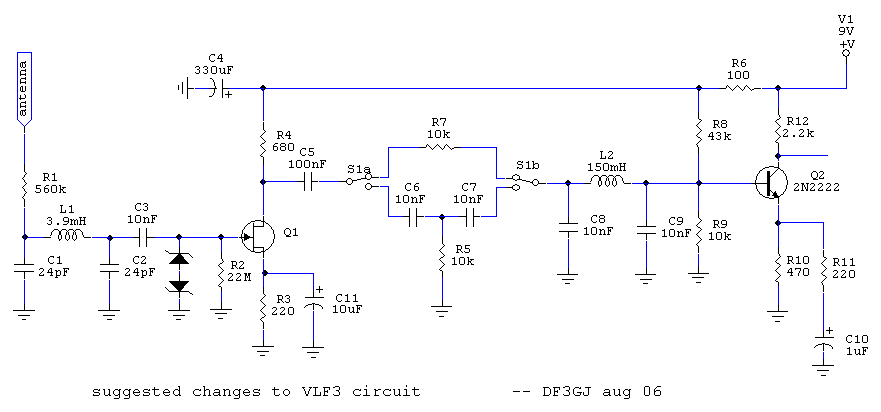

In 1990, space scientist Bill Taylor of NASA's Goddard Space Center in Greenbelt, Md., and Bill Pine, an enterprising science teacher at Chaffey High School in Ontario, Calif., founded the Interactive NASA Space Physics Ionosphere Radio Experiments program, or INSPIRE, which uses these receivers to bring the excitement of studying very-low-frequency radio waves into the classroom.INSPIRE, a non-profit education program managed at the Goddard Center, encourages students to build and activate VLF receiver systems and develop their own research projects. Image credit: NASA/MSFCThe receiver will help NASA and students around the nation study the eerie "music" of planet Earth-radio waves emitted by lightning strikes and other natural phenomena, which VLF receivers deliver as a weirdly beautiful chorus.VLF receiver systems are simple gadgets, little more than an antenna and an audio amplifier, which translate radio waves-inaudible to humans-into acoustic oscillations we can hear. Curt Szuberla and his student team of aspiring scientists and engineers, who braved the elements this winter on NASA's behalf to scout locations for and build a very-low-frequency radio receiver, or VLF.Image at right: The aurora borealis, or "northern lights"-captured here by Space Shuttle Endeavor astronauts in 1992-emits strong radio waves that can be translated into audible sound when channeled through very-low-frequency radio receivers. LXK 60-kHz receiver.But none of that can chill the enthusiasm of North Pole High School math teacher Dr. Whistlers and radio noise of various origins were observed in this region of radio frequencies.2 These input circuits might also be used with some of the surplus RAK-RBA receivers, the Palomar Engineers vlf converter, the new Elmek. The standard VLF data form was a sonogram (graph) showing signals as a function of time and frequency.
Wary of uncertain local terrain that could block or muffle radio waves-and equally wary of bears-the team settled on the school roof. "Space weather"-activity on the Sun such as solar flares and coronal mass ejections, which can change the interplanetary magnetic field and cause dazzling auroral light displays and other disturbances in Earth’s own magnetic field-make the polar regions more favorable sites for VLF systems to pick up natural Earth sounds.At the "top" of the world, Szuberla's team also will record the low-frequency music of another natural phenomenon-the aurora borealis-and stream it via the Internet to the entire INSPIRE community, and to classrooms and Web users worldwide.For Szuberla's students, that meant finding an ideal site for the VLF system and building the equipment. But none as far north as North Pole, Alaska.Enter Szuberla, who holds a doctorate in physics, and his quartet of field researchers, 16-year-olds Kit Dawson and Matt Welch and 17-year-olds Matt Keller and Nicolas Leland-all juniors studying calculus and advanced computer programming.Szuberla, in consultation with NASA researchers Jim Spann, Mitzi Adams and Dennis Gallagher of the Marshall Space Flight Center in Huntsville, Ala., recognized a unique opportunity to use the INSPIRE concept in a new way-bringing the hunt for ghostly Earth music to a whole new generation of students.Earth's protective magnetic field is familiar to most people, but perhaps less well known is the way it expands around the planet's equator and converges at the North and South Poles.
...
Nasa Vlf Receiver Verification Of A
Schools around the country will be invited to join a pilot program to fine-tune the project, but the site will be accessible for all interested users. The three-year education initiative, based on INSPIRE and made possible by a grant in 2004 from NASA’s Science Mission Directorate, will challenge students nationwide to use VLFs to "hunt" for natural Earthsounds-sparking their interest in science and space.During the 2005-2006 school year, NASA and North Pole High School will stream real-time audio via the Internet. The team will test their apparatus during the spring term, sending audio to Spann and his colleagues at the Marshall Center for verification of a clean signal.In the fall of 2005, the Marshall Center's Space Science branch at the National Space Science and Technology Center in Huntsville will initiate a Web-based "Earthsounds Scavenger Hunt" program. During their initial equipment tests, Szuberla’s students quickly became fascinated by the bursts of "sferics," "tweeks" and "whistlers"-nicknames for lightning-spawned radio waves translated by the VLF system into audible scratches, chirps and squeals. "In the spring, they'll learn what comes out of it."It may not take that long to pique their interest. "Right now, they're primarily interested in what goes into the box," he said.


 0 kommentar(er)
0 kommentar(er)
